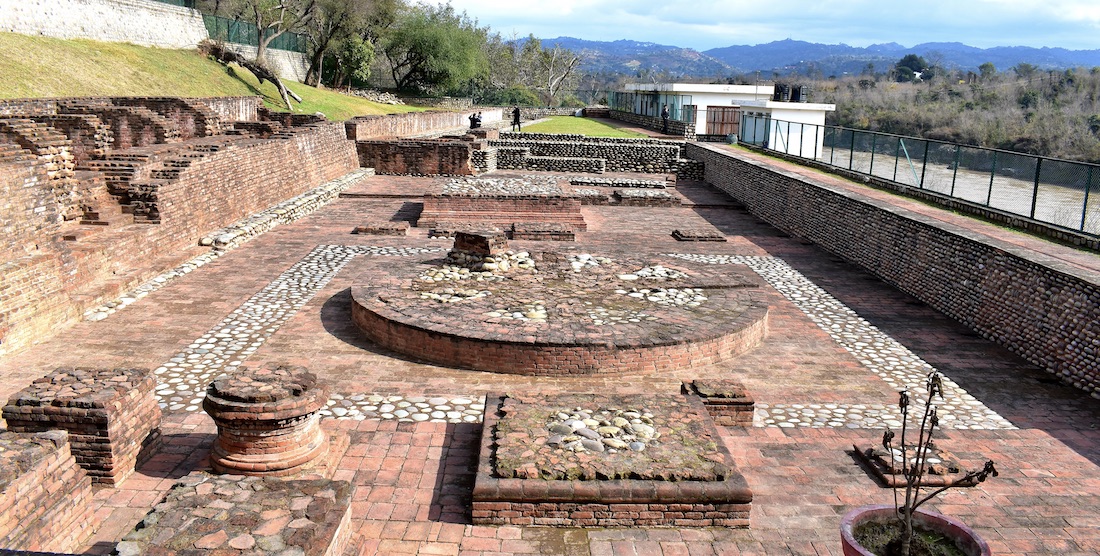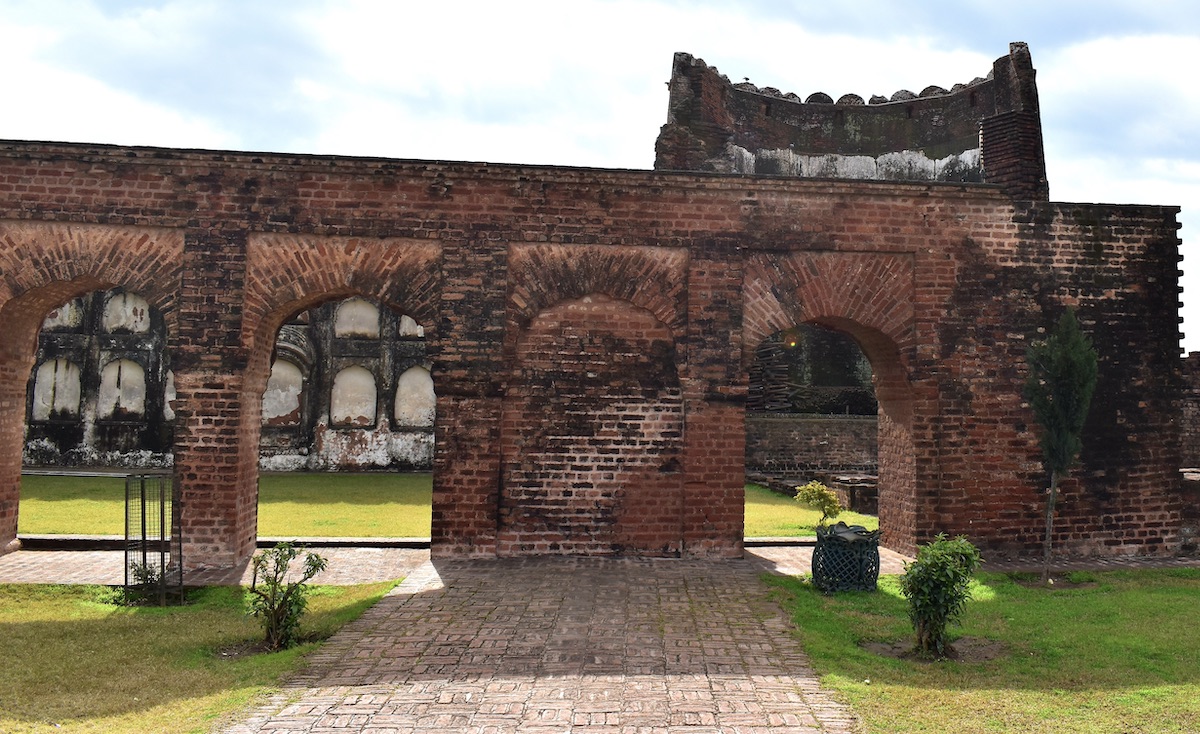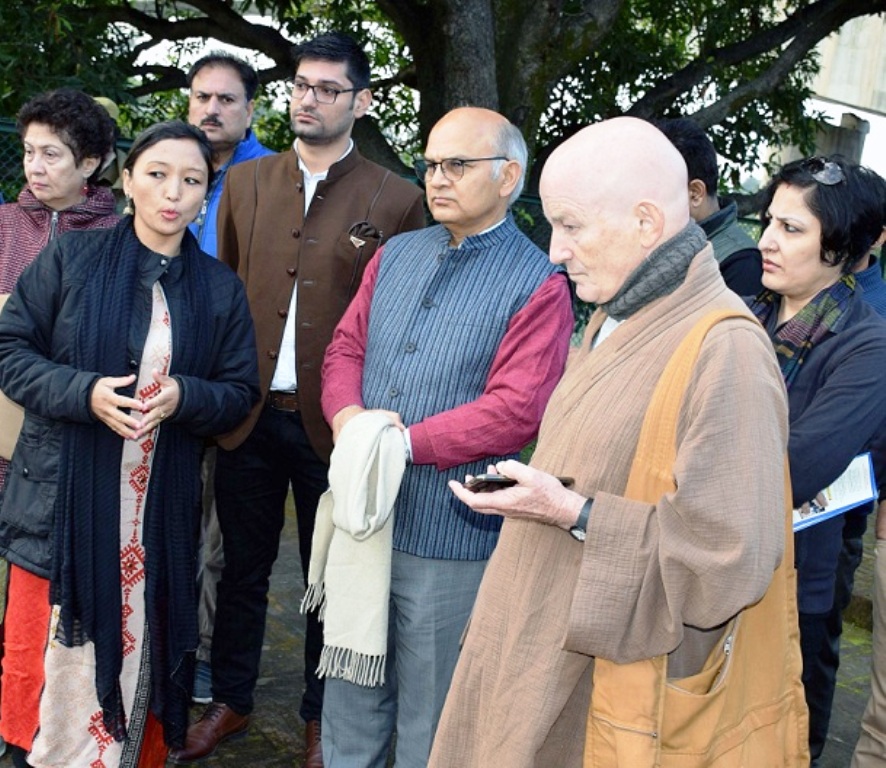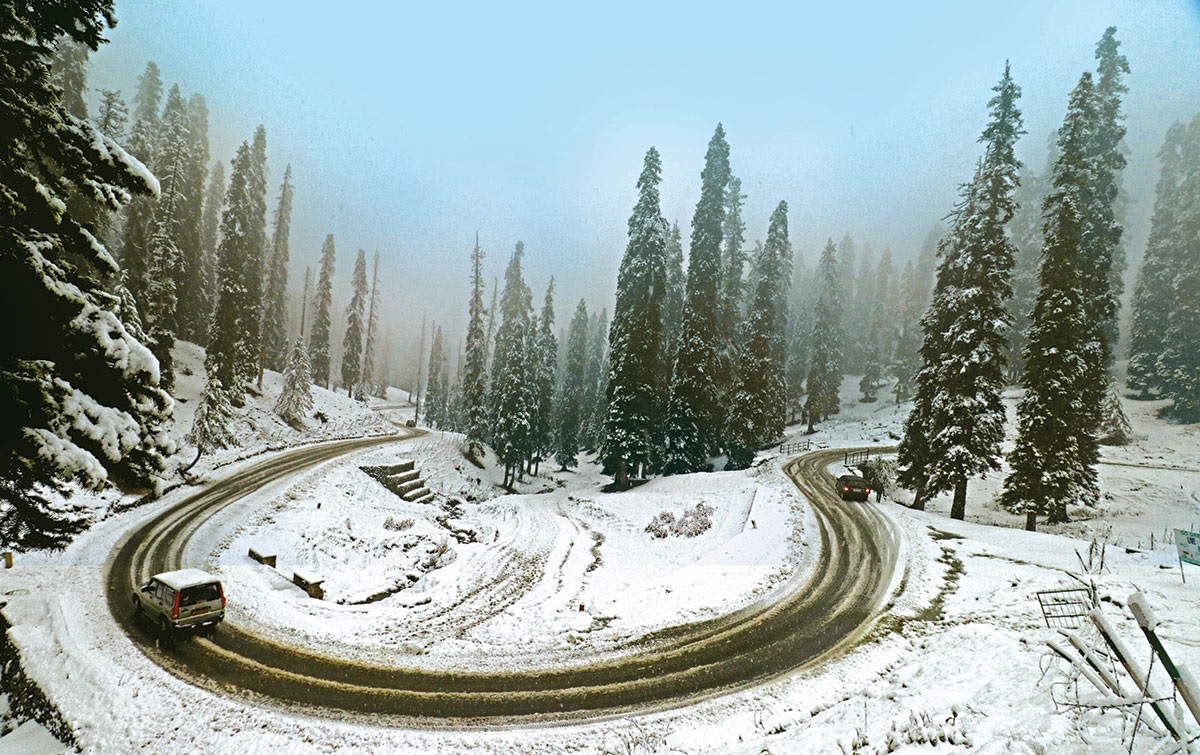On the right bank of the Chenab River near Akhnoor is Ambaran, a Buddhist monastic complex. Batool Andrabi chronicles the development of the sites from antiquity to the present day, highlighting their cultural importance to the evolution of Jammu as a society

Perched on the banks of the Chandrabhaga River, the Akhnoor Fort, built atop the earlier terraces from the Harappan period, serves as a testament to historical continuity.
The fort’s origins can be traced back to Raja Tej Singh, who initiated its construction following the Mughal fortification pattern. However, it was not until the early nineteenth century that Raja Alam Singh finalised its formidable structure. Following his enthronement in 1822 AD, Raja Gulab Singh executed repairs, further solidifying its significance.
“The Akhnoor Fort stands as a testament to the rich tapestry of history woven throughout the region,” Deepak Dhar, an official associated with the fort upkeep, said. “Its majestic walls and storied past offer a glimpse into the cultural heritage of the Jammu region.”
An Impressive Structure
The fort’s grandeur lies in its towering fortification walls, embellished with battlements, and strategically positioned bastions. At each corner stand two-storeyed watchtowers, surrounded by protective battlements.
Access to this architectural marvel is granted through two entrances—one facing the river, the other on the northern side. The spatial arrangement of the fort consists of two distinct sections, divided by a wall with a gateway leading to the riverside palace.
The southern portion of the fort is home to a two-storeyed palace adorned with mural paintings, offering a glimpse into the aesthetic preferences of its past inhabitants. In contrast, the northern side remains a silent witness, steeped in history.
“Exploring the Akhnoor Fort is akin to delving into a treasury of tales. Each corner resonates with history,” remarked visitor Sanjay Khatri.
“It is not merely a monument; it embodies resilience and endurance, steadfast with time. Its historical importance is profound,” local scholar Rajesh Mahajan noted, while discussing the historical significance of the Fort. “Exploring the fort’s historical layers unveils more than its regal exterior. Limited excavations within have revealed remnants of ancient structures, offering a captivating narrative of its past. Notably, the discovery of a settlement within the fort marks the northernmost extent of the Indus Valley Civilization—Manda.”
Into The Fort
Within the fort lies an archaeological treasure trove unveiling a threefold sequence of cultures. In Period I, relics from the Harappan era emerge, featuring red wares, copper pins, bone arrowheads, and sherds adorned with Harappan graffiti.
Period II reveals early historic pottery, adding another layer to the fort’s historical narrative. Period III, characterised by Kushana objects and impressive walls constructed with rubble masonry, concludes this captivating journey through time.
The Akhnoor Fort, with its layers of history and architectural splendour, invites visitors to unravel the mysteries within its walls. Each stone, mural, and artefact seemingly whispers tales of a bygone era, urging us to appreciate the richness of its cultural heritage.

While exploring the magnificent site, attention turns to Jia Pota Ghat on the right bank of the Chandrabhaga, now known as Chenab. This ghat, a prominent feature of the town, holds significance in its antiquity and historical importance. Locals, especially those familiar with Akhnoor’s history, note that Jia Pota Ghat is among several ghats lining the Chenab’s right bank.
The Town
Beyond the fort and the ghat, Akhnoor town stands out as a pivotal ancient site, deeply interwoven with the Harappan period. It takes pride in its association with Maharaja Gulab Singh, the founder of the Jammu and Kashmir state. The Akhnoor Fort has recently attracted attention through periodic excavations, revealing terracotta items and other antiquities.
Terracotta statues, including Buddha heads dating back to the third century AD, have been unearthed within the confines of Akhnoor Fort. These artefacts, now housed in museums globally, offer insights into the cultural and spiritual practices of past inhabitants who revered Buddha. Notably, life-sized terracotta heads on display at the Dogra Art Gallery in Jammu establish tangible links to the ancient believers in Buddha who once inhabited this historic site.

“Akhnoor Fort is not merely a historical landmark; it embodies our identity and heritage. Each visit fills me with pride, knowing our ancestors crafted such magnificence,” remarked resident Vikram Khajuria.
Buddhist Stupa
Located approximately 2-3 kilometres from the fort, Ambaran has revealed remnants of a Buddhist Stupa through extensive excavations. Situated along the right bank of the river Chenab, this historic site has emerged as a focal point for the preservation of Buddhist heritage.
“Ambaran is a hidden gem amidst the beauty of Jammu and Kashmir,” remarked visitor Priya Verma. “The serenity of this place, combined with its historical significance, makes it a must-visit for anyone intrigued by unravelling the mysteries of the past,”
Conservation Efforts
Initiated in 1973-74 by the Srinagar Circle of the Archaeological Survey of India, small-scale excavations marked the beginning of exploration at the site. However, it was not until the extensive excavations between 1999-2001 and 2008-2010 that the site fully revealed its historical treasures, including the remnants of a Buddhist stupa and vihara – a significant discovery for the Jammu region.
“Strolling through the ruins of Ambaran, I could not help but marvel at the craftsmanship of our ancestors,” remarked travel enthusiast Rahul Jamwal. “It is humbling to contemplate the lives they led and the legacies they left behind.”
Post-excavation studies at Ambaran provide insight into the site’s cultural evolution across four distinct periods. Period I suggest the presence of a small settlement during the second and first century BC, evidenced by grey ware potteries.
Period II, the most significant phase, displays Kushana-era construction activities (1st-3rd century AD), including the creation of the stupa and vihara. Period III reflects the Gupta Age, characterized by the enhancement of structures with terracotta figures and decorations.
Finally, Period IV, dating to the post-Gupta era (circa 6th-7th century AD), reveals repairs to monastery structures and their subsequent destruction, possibly due to flash floods in the River Chenab.
Kushan Era Details
The stupa, dating back to the Kushana period, stands prominently with a square base measuring 6×6 meters. Constructed with plain decorated and moulded bricks, its core filled with neatly arranged pebbles mixed with earth offers insights into its original form. Votive stupas from the Kushana and later periods contribute to the richness of the archaeological discoveries.
“The excavation site at Ambaran reveals the hidden treasures of Buddhist heritage, providing a captivating glimpse into ancient civilisations that once flourished in this region,” remarked archaeologist Muskan Sharma. “Ambaran serves as a poignant reminder of the enduring Buddhist legacy that pervades the landscape of Jammu and Kashmir. Its archaeological findings illuminate the spiritual and cultural heritage of our Buddhist ancestors.”
Collections So Far
Excavations at Ambaran have revealed a wealth of antiquities, including terracotta moulds, iron and copper objects, various redware potteries, and copper coins issued by Kushana rulers such as Soter Megas, Kanishka, and Huvishka. Particularly noteworthy is the discovery of a gold casket containing relics, found within a silver casket, housed in a copper reliquary alongside gold and silver foils, pearl beads, and copper coins in the central part of the stupa, adding an aura of mystery to the site.
Anjali Bakhshi remarked, “Akhnoor Fort and Ambaran offer complementary perspectives on our history, each serving as a unique cultural landmark in our backyard.”
“As each artefact reveals a fragment of the past, the legacy of Akhnoor and its historic sites remains a beacon of cultural heritage, inviting all to explore and appreciate the layers of history woven through time,” she said.















